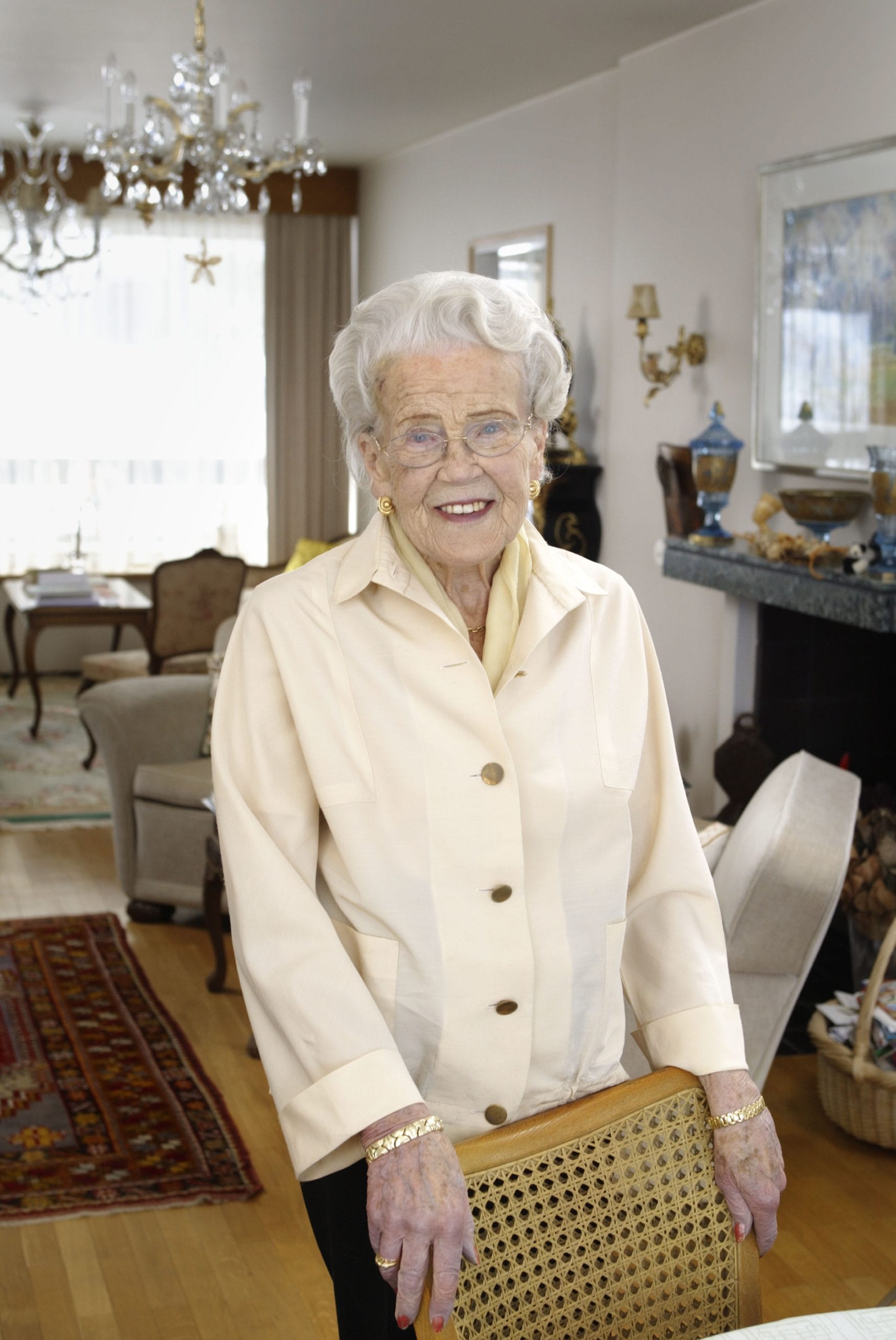
Mirjam Helin's interview in 2004
Professor Mirjam Helin wanted the singing competition bearing her name to be the best of its kind in the world. The following interview was conducted after the fifth Mirjam Helin International Singing Competition in 2004.
“Nothing but the best”
The fifth Mirjam Helin International Singing Competition was successfully concluded. Professor Mirjam Helin once again spent every minute she could with the competitors. She enjoyed the performances and made sure that all the arrangements involved in the competition went according to plan.
“I want the competitors to feel welcome. Their well-being is my first priority. During the competition, the singers and their accompanists stay in carefully selected private homes, in which they have the opportunity to rehearse. We provide their daily meals. The competitors each receive a guide that speaks their native tongue, and there is always assistance available to them at any time during the competition,” states Mirjam Helin.
Several social evenings are organised during the two weeks of the competition. Once the intense final is over, the competitors are invited to celebrate at a joyous dinner party. Once the competitors have left, Mirjam Helin invites all of the hosts to a luncheon to share their experiences.

All for art
Mirjam and Hans Helin did not have any children. They jointly decided to testament their estate to benefit some form of art. They further decided that, after one of them dies, the remaining spouse would specify the object of their donation. Hans Helin, LL.M., died in 1973. In January 1981, Mirjam Helin contacted an advocate for the Finnish Cultural Foundation, namely Matti Ilmanen, M.SSc. She expressed her desire to establish the Mirjam and Hans Helin Fund.
“The idea for the fund had been brewing in my mind for some time. Its implementation would not have been possible as long as I was working as a lied lecturer at Sibelius Academy,” explained Mirjam Helin. “Ilmanen invited me to the Cultural Foundation to discuss the matter further. That was when I revealed my dream of an international singing competition, which the Cultural Foundation would arrange with funding from my donation. I wanted to be able to see the competition firsthand at least once. My 70th birthday was coming in March and I figured that I wouldn’t be around for too much longer,” said the professor, known as the ‘steel lady’, as she reminisced about the competition’s roots. She lived, however, to be 95 years old.
The project got underway rapidly. The decision was made to arrange the first Mirjam Helin International Singing Competition in August 1984, and every five years after that. It would take its place alternating with the international violin, cello, singing and conductor competitions.
Models from abroad
An organisation committee was put together for the first competition, and Conductor Ulf Söderblom was named as chairman. The members comprised Jorma Hynninen, opera singer; Matti Ilmanen, M.SSc.; Kauko Karjalainen, Executive Director of the Finnish Music Information Centre; Antero Karttunen, Music Director for the Finnish Broadcasting Company (YLE); and Ellen Urho, Rector of Sibelius Academy. Mirjam Helin suggested that the chairman would need a good secretary. Sirpa Hietanen was appointed as the committee and competition secretary.
“There are a number of international competitions held worldwide. We wanted to learn about them, learn from them, and avoid making mistakes. Matti Ilmanen visited Toulouse, France and at the Tchaikovsky Competition in Moscow, Russia. Sirpa Hietanen travelled to Paris and Italy, and I travelled to London and Budapest. On the basis of these experiences, we decided how to go about realising our singing competition – both from an external and internal perspective. It could be nothing but the best!”
Mirjam Helin wanted to create a competition for young singers who had already achieved a high performance standard. In the concert hall, the singers had the opportunity to showcase their true talents rather than simply sending a stack of papers to apply for a grant.
Star quality can’t be manufactured
According to Helin, the relationship between teacher and student is extremely delicate and crucial, and, at its best, warm and intimate. “A teacher must be demanding, but in a graceful way. There is a great deal of anatomy involved in singing. I used myself as an example, for instance, in the inhalation and exhalation exercises. The aim was a natural one, simply to free the voice. The teaching got through, by one means or another.”
Mirjam Helin said that she paid a great deal of attention to the words of a song. “When I am enthusiastic, I place more emphasis on some words than others. One should also try to find the climax of the words in a song and ensure that the breathing is correct at that point. The content of the song should come forth through the singer’s entire body.”
But where does one find stage charisma?
“It comes from within,” is the response of the esteemed vocal professor. “It is very easy when the performer’s disposition is natural and calm. A little smile and a sweet glance is all it takes. Star quality can’t be manufactured. Star quality is the result of a singer’s own will and determination.”
Text: Mariitta Hämäläinen